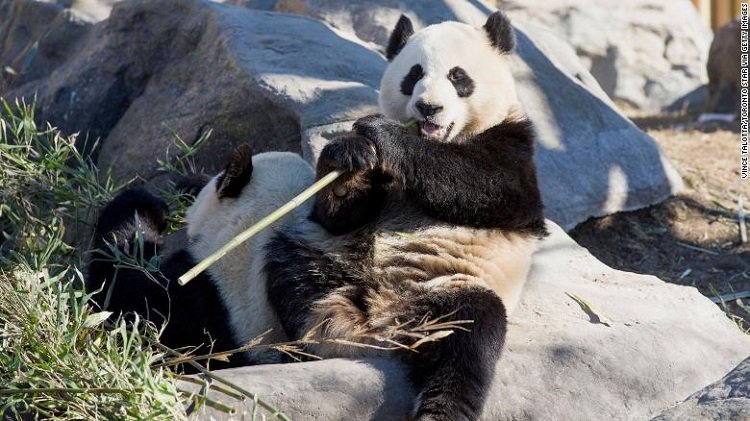A shortage in the supply of bamboo has forced Calgary Zoo to return two giant pandas to China.
In a statement, the zoo said that the bamboo is usually imported from China to feed the pandas but because of the coronavirus pandemic, flights have been disrupted.
The pandas, named Er Shun and Da Mao, were supposed to remain in Canada until 2023 as per a 10-year agreement with China. But concerns that the second wave of coronavirus cases could further disrupt the supply chain prompted the zoo to send them back early.

Fresh bamboo comprises almost the entirety of a panda’s diet, said the Calgary Zoo, with the animals normally eating about 40 kilograms (88 pounds) of bamboo a day.point 281 |
Most of the bamboo Er Shun and Da Mao had been eating before the pandemic hit had been sent directly to Calgary from China but those flights have since been canceled.point 136 | 1
Despite efforts to source the bamboo from other suppliers, the zoo ran into several logistical issues. They are also concerned that any new supply lines could also get disrupted with little to no warning and thus leaving the animals with nothing to eat.
“We believe the best and safest place for Er Shun and Da Mao to be during these challenging and unprecedented times is where bamboo is abundant and easy to access,” Dr. Clément Lanthier, the president and CEO of the Calgary Zoo, said in a statement. “This was an incredibly difficult decision to make but the health and well-being of the animals we love and care for always come first.”
The duo arrived in Canada in 2014 and stayed at the Toronto Zoo for five years before transferring to Calgary in March 2018 along with cubs Jia Panpan and Jia Yueyue. Those cubs have since been sent to China.
Speaking to CBC, Lanthier said that the zoo already initiated the process to return the pandas to China several weeks ago and they hope the permits will be approved this week although he hopes the process can be expedited further.
Despite the fact that giant pandas are one of the rarest animals on the planet, efforts at preserving the species have recently shown some signs of success. The International Union for Conservation of Nature upgraded the status of the species from “endangered” to “vulnerable” in 2016.
According to the World Wildlife Fund, there are only roughly 1,864 giant pandas living in the wild.
For years, China has sent giant pandas to other countries as a sign of friendship and cooperation in what is known as “panda diplomacy.” It gives foreigners an opportunity to see the animals up-close while fostering good relations between governments.
Replaced!
